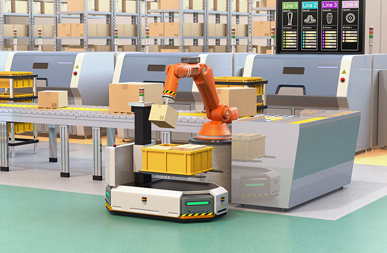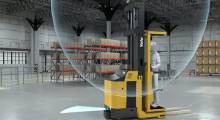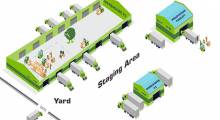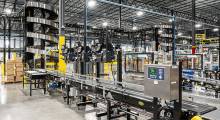For automation to spread to more warehouses, it will have to connect easily and effectively with existing systems. NAI Group LLC last week announced the expansion of its capabilities to provide interconnect solutions for the growing warehouse automation industry. The Troy, Mich.-based company custom designs and manufactures cable assemblies and harnesses for equipment OEMs and system integrators.
Only about 5% of North American warehouses are fully automated, according to NAI. Robotics can reduce labor costs, increase efficiency, increase workplace safety, and address the concerns over the availability of labor. These benefits can outweigh the challenges of implementing automation in warehouses and distribution centers, said the company.
In addition, technologies such as the Industrial Internet of Things (IIoT) have begun to transform supply chain automation. It entails automating operations from automatic data capture to software systems, automated storage and retrieval systems (ASRS), picking, labeling, identifying, transport, deliver, and more.
NAI connects varied applications
NAI its interconnectivity systems enable applications such as high-density warehouse storage, narrow-aisle equipment, high picking, high storage, and other operational efficiency measures. The company produces cable assemblies and harnesses for equipment such as the following:
- Automated guided vehicles (AGVs)
- Smart picking
- Sortation systems
- Tote handling
- Smart AC forklifts – pallet, stack, reach, very narrow aisle (VNA), and counterbalance trucks
- Driverless lift trucks
- Conveyors and overhead systems
- Palletizing and depalletizing
- Storage systems
- Workstation systems
- AC charging stations
- Other IIoT applications
NAI said it provides cable assemblies for the newer shuttles that move inventory, replacing traditional conveyor systems, for which it has also supplieds cables.
The company added that it can connect the entire warehouse operation. Historical inventory data can be accessed to accurately determine optimal storage methods and areas. Collaboration platforms can perform integrated scheduling of various robots and logistics equipment to efficiently complete the flow of goods.
Goods-to-person picking systems can reduce the movement of workers, increase order-fulfillment efficiency, and reduce errors. Robots with advanced vision technology can accurately pick orders. Automation can pack goods according to their exact size, effectively reducing waste. NAI also noted that connected automation can maintain order status tracking.
NAI expands capabilities
Thanks to recent product development, NAI said it has expanded its capabilities to add coax assemblies to this portfolio:
- Copper cable assemblies for power and/or data
- Fiber-optic assemblies for high-speed data
- Hybrid copper/fiber assemblies and harnesses
- Coaxial cable assemblies for vision systems and other applications
- Ruggedized interconnect products to withstand harsh environments
- IP 67- and IP 68-rated assemblies
- High-mix/low-volume and low-mix/high-volume
- Control panel and box builds
- Complex harnesses, such as those used in the semiconductor and mining industries
As a privately held company, NAI said it has the resources to move quickly and ramp up production. It added that its global footprint can optimize shipping and provide the best value for sourcing.
Facilities can reap connectivity benefits
NAI noted that warehouses need increasing levels of agility to keep up with e-commerce demand and the need for supply chain resilience. Connected automation can help.
NAI claimed that its copper and fiber-optic cable assemblies and harnesses, coupled with block assemblies, panel and box builds, can quickly meet or exceed customer expectations and deliver high reliability.
With scalable interconnect systems, facilities and integrators can use sensors to collect data and solve design, manufacturing, and logistics problems, said NAI. Warehouses can safely and efficiently use mobile robots, autonomous vehicles, drones, and wearables to act upon this data for inventory, picking, materials handling, and replenishment.
Article topics
Email Sign Up
















